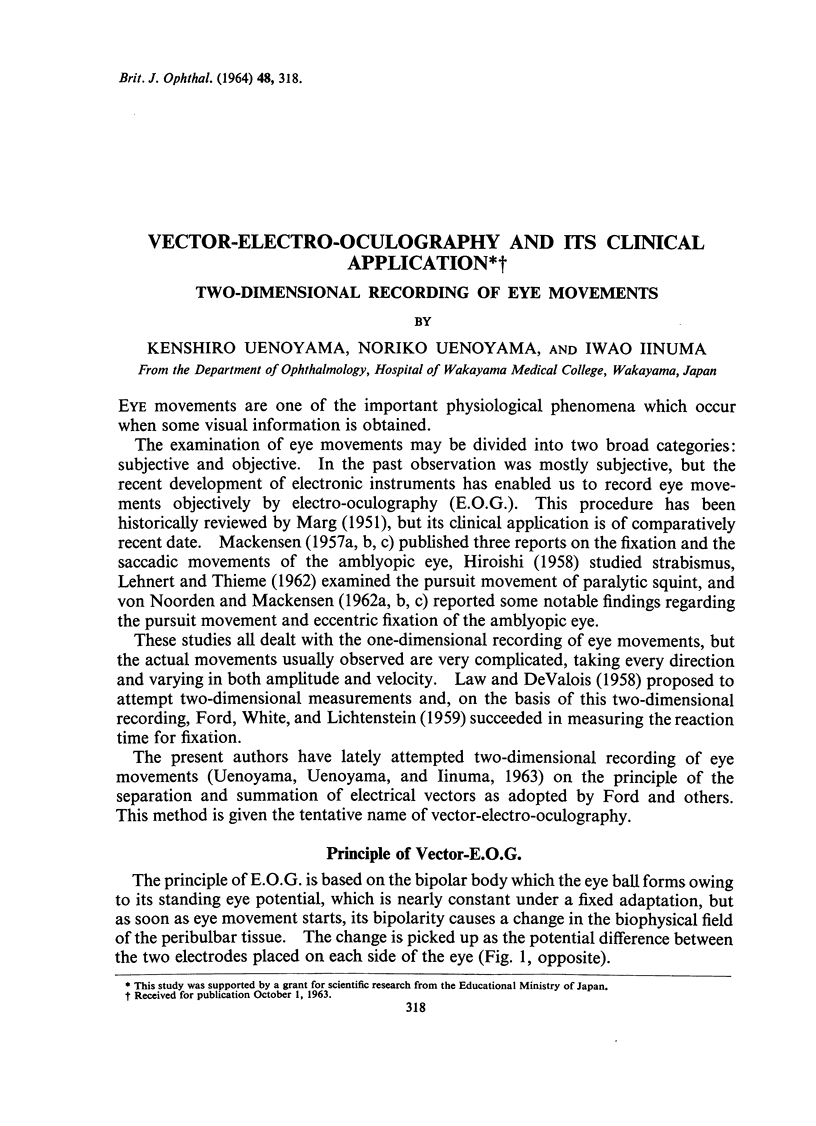Full text
PDF











Images in this article
Selected References
These references are in PubMed. This may not be the complete list of references from this article.
- ARDEN G. B., KELSEY J. H. Changes produced by light in the standing potential of the human eye. J Physiol. 1962 May;161:189–204. doi: 10.1113/jphysiol.1962.sp006881. [DOI] [PMC free article] [PubMed] [Google Scholar]
- FORD A., WHITE C. T., LICHTENSTEIN M. Analysis of eye movements during free search. J Opt Soc Am. 1959 Mar;49(3):287–292. doi: 10.1364/josa.49.000287. [DOI] [PubMed] [Google Scholar]
- LEHNERT W., THIEME W. [Electro-oculographic studies on eye muscle functions]. Albrecht Von Graefes Arch Ophthalmol. 1962;164:463–472. doi: 10.1007/BF00682200. [DOI] [PubMed] [Google Scholar]
- MARG E. Development of electro-oculography; standing potential of the eye in registration of eye movement. AMA Arch Ophthalmol. 1951 Feb;45(2):169–185. [PubMed] [Google Scholar]
- VON NOORDEN G. K., MACKENSEN G. Pursuit movements of normal and amblyopic eyes. An electro-ophthalmographic study. 1. Physiology of pursuit movements. Am J Ophthalmol. 1962 Feb;53:325–336. doi: 10.1016/0002-9394(62)91183-2. [DOI] [PubMed] [Google Scholar]













